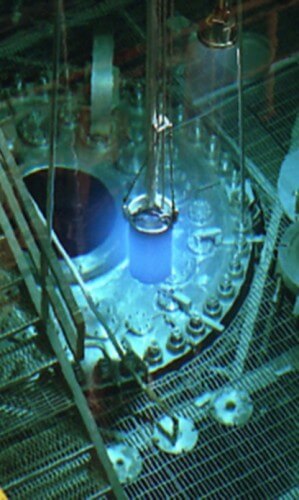Scientists confirmed a 2010 discovery of the 117th element, closing a four-year gap after the discovery of the 118th element. The International Union of Chemistry insisted on further approval, so it is only now being officially announced

The periodic table of the elements has now been expanded after the announcement of the verification of the discovery of a new element with the atomic number 117, an element that has not yet received an official name.
In 2010, a joint international research team from the USA and Russia announced that it had succeeded in producing atoms of an element with 117 protons, a discovery that fills the gap created four years earlier with the discovery of the 118th element. At the same time, the International Union of Pure and Applied Chemistry (IUPAC) insisted on receiving confirmation of this discovery by two independent research teams before allowing the new element to be officially added to the periodic table, although the temporary name Ununseptium was used until the final confirmation. It lasted for about four years, and it seems that the goal has finally been achieved.
"The production of element 117 is the absolute limit of what can be achieved today," says Professor David Hinde, from the Australian National University, who is one of the authors of the paper just published in the scientific journal Physics Review Letters. "This is why the creation and discovery of even a few such atoms is a great victory for us."
Professor Hinde was part of a research team from the GSI laboratory in Germany that succeeded in fusing and uniting a calcium atom (48) and a beryllium atom (249). Such nuclear fusion is not simple since the production of Bercium atoms in sufficient quantities is very challenging and also due to the fact that its half-life is only 320 days. Less than half of the amount produced will still exist a year after the material is produced, which means that the transfer and cleanup of the material must be done quickly. The resulting product, like all atoms heavier than lead, was unstable. By observing the emitted alpha particles, the team concluded that these emissions are the product of two decay chains, both originating from isotope 294117, i.e. - an atom with 117 protons and 177 neutrons. One of the chains included the isotopes 270Db and 266Lr.
In general, heavier atoms have shorter half-lives, that is, their rate of decay into radiation is faster the greater their mass. At the same time, there are atoms in what are known as 'islands of stability' (relatively stable elements) and the researchers believe that the isotope 270Db with a half-life of one hour "represents an important step towards the discovery of nuclei with longer lifetimes in terms of superheavy elements that are present In the area of the 'islands of stability'."
The production process was very inefficient - more than 10 to the 19th power of the isotope 48Ca, which is itself a rather rare isotope, were fired at the bercalium atom in order to produce only four atoms of the element 117. Despite this, researcher Hinde says that: "Based on an article It is likely that we will be able to produce more atoms of element 117." Element 117 is the last element out of 6 elements whose discoveries were first published by the Integrated Institute for Nuclear Research in Russia. Of these six elements, elements 113, 115 and 118 still remain unverified, and the first two were claimed as having been verified.
Such a small amount of sample does not allow us to learn much about the chemistry of element 117. The position of this element in the periodic table places it in the group of halogens, such as fluorine and chlorine, where their high ability to attract electrons, an ability that makes this family very reactive, gets weaker as you go down in the direction of the table. The researchers believe that if indeed someone succeeds in creating an amount sufficient to observe chemical reactions, then it is more likely that this element will lose electrons than attract electrons.
Researchers still have big dreams - "The big question is how can we produce elements 119 and 120?" For this, it will be necessary to find atoms heavier than calcium that we can shoot at the target. The researchers are currently examining several such candidates.
The news about the study
Note: In Wikipedia it is called the element OnonsepticumThe

3 תגובות
This is not accurate, the original articles are from the relevant research institutes, i.e. press releases, so there is no copyright issue with them (if you are concerned about the legal aspect). As for credit, certainly if Dr. Lakimia translates, he invests his experience so that the article comes out accurate in Hebrew and he deserves credit for that, and in every article we refer to the source, while English websites are exempt from this because they publish the message in the original language.
This article is basically an English translation of this article: http://www.iflscience.com/chemistry/new-element-confirmed
Why are you taking the credit for yourself?
For broader implications of the discovery, see the Scientific American Israel article
http://sciam.co.il/archives/6974